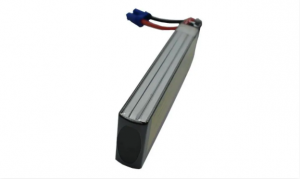1. Definition of Lithium Polymer Battery
The three elements of a general battery: positive electrode, negative electrode and electrolyte. The so-called lithium polymer battery refers to a battery system that uses polymer materials for at least one or more of the three elements. In the current lithium polymer battery system, polymer materials
Most of them are used in the positive electrode and electrolyte. The positive electrode material uses conductive polymer or inorganic compounds used in general lithium ion batteries, the negative electrode often uses lithium metal or lithium-carbon intercalation compound, and the electrolyte is solid or colloidal.
Polymer electrolyte, or organic electrolyte. Since there is no excess electrolyte in the lithium polymer, it is more reliable and stable.
2. The characteristics of lithium polymer batteries
Lithium polymer batteries (Li-polymer, also known as polymer lithium-ion batteries) have many advantages such as high specific energy, miniaturization, ultra-thinness, light weight and high safety. Based on these advantages, lithium polymer batteries can be made into any shape and capacity
The battery can meet the needs of various products; and it adopts aluminum-plastic packaging, and internal problems can be immediately manifested through the outer packaging. Even if there is a safety hazard, it will not explode, but will only swell.
In polymer batteries, the electrolyte plays the dual function of a separator and an electrolyte: on the one hand, it separates the positive and negative materials like a diaphragm to prevent self-discharge and short circuit inside the battery. On the other hand, it is in the positive and negative like the electrolyte. Conduct lithium ions between the poles. Polymer electrolyte not only has good conductivity, but also has the characteristics of light weight, good elasticity, and easy film formation that are unique to polymer materials. It also conforms to the development trend of light weight, safety, high efficiency, and environmental protection of chemical power sources.
3. Classification of lithium polymer batteries
Lithium polymer batteries can be divided into three categories according to the electrolyte:
(1) Gel polymer electrolyte [11] Lithium ion battery, which adds additives to solid polymer electrolyte to improve ion conductivity, so that the battery can be used at room temperature;
(2) Solid polymer electrolyte lithium ion battery, the electrolyte is a mixture of polymer and salt, the ion conductivity at room temperature is low, and it is suitable for high temperature use;
(3) Lithium-ion batteries with composite gel polymer cathode materials. Conductive polymer is used as the cathode material. Its specific energy is 3 times that of existing lithium-ion batteries. It is the latest generation of lithium-ion batteries.
Due to various reasons such as technology, lithium polymer batteries are currently focused on the research of low-current charging and discharging characteristics of small-capacity batteries. The charging protection circuit for medium-to-large-capacity, medium- and high-power lithium-ion batteries is not mature [20], once it is resolved In order to solve the problems of charging, balancing and protection circuits of large-capacity lithium polymer batteries, polymer lithium batteries will be better used in electric bicycles. Therefore, increasing the research on lithium polymer has major social and economic benefits. At the same time, there are other aspects of potentially great significance.
Post time: May-20-2021





